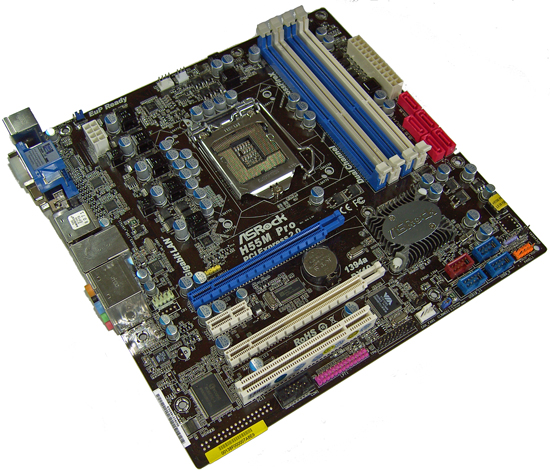Choosing the Best H55/H57 Motherboard - Part 1
by Rajinder Gill on January 31, 2010 11:30 PM EST- Posted in
- Motherboards
Final Words
This concludes part one of our coverage today. We've still got plenty of testing to do over the next few weeks, as there are a few areas we'd like to explore on some of these boards - namely Lynnfield overclocking, which we have not had enough time to perform on the H55/H57 chipsets just yet. The boards all POST when a Lynnfield processor CPU is inserted; we need to find out how well the cheaper boards handle a quad-core HT enabled CPU for overclocking, and if it's worth saving some money over entry to midrange P55 boards by using H55/H57 for the same task.
We're also looking at adding in some USB 3.0 testing in the near future; it's a matter of getting the right equipment in the lab to test these features in a meaningful way and to make sure that the boards work as they should.
Testing of the next four boards is already underway, and we're aiming to have something up in a couple of weeks. By then, we should be able to draw a firm conclusion of which board delivers the best functionality, performance, and overall feature set. The four boards we'll be looking at in the labs over the next two weeks are the Gigabyte H57M-USB3 and H55M-USB3, the BIOSTAR TH55HD, and finally the ECS H55H-M. Stay tuned….
Assuming you can get past Intel's kicker of locked single card GPU support on these boards and you really must buy now, then based upon our experience with the four boards we've looked at today you've got two reasonable choices. If your budget will stretch far enough, go for the ASUS P7H55D-M EVO. It's the smooth-operator of the bunch and should give you a trouble free time if you plan on any overclocking.
If you're after cheap and cheerful, the ASRock H55M-Pro will get the job done. The remaining quirks are a matter of overclocking preferences and overclocking functionality more than anything else. The current release BIOS has not given us any issues in normal usage scenarios at all so far and seems to make for a very stable PC build.

In closing, one thing we have noticed in our Clarkdale testing is that the CPUs overclock memory better when placed in some of the mid-high end P55 motherboards. It's not a huge gap but it becomes readily apparent at higher memory frequencies (over DDR3-1800MHz). We're not sure if this is due to vendors not having a full grip on the H55/H57 chipsets yet, or if it's down to design compromises on the H55/H57 motherboards we've tested - it's probably safe to say it's a bit of both. It'll be interesting to see how things develop in this regard over the coming weeks. This is another reason why it might be wise to wait a while and see how things pan out, depending on what you're looking for from the Clarkdale platform.










56 Comments
View All Comments
Rajinder Gill - Monday, February 1, 2010 - link
Hi AG,I think Anand touched on some AMD/Intel compares in his Clarkdale articles. Have a look at these and see if they offer some of what you are looking for;
http://www.anandtech.com/cpuchipsets/showdoc.aspx?...">http://www.anandtech.com/cpuchipsets/showdoc.aspx?...
http://www.anandtech.com/cpuchipsets/showdoc.aspx?...">http://www.anandtech.com/cpuchipsets/showdoc.aspx?...
regards
Raja
Rajinder Gill - Tuesday, February 2, 2010 - link
Forgot to mention, check out the Anandtech bench beta for CPU performance compares:http://www.anandtech.com/bench/default.aspx?b=2">http://www.anandtech.com/bench/default.aspx?b=2
regards
Raja
JonnyDough - Thursday, February 11, 2010 - link
Will there be a graphics chart beta soon too? Please say yes. :)Rajinder Gill - Thursday, February 11, 2010 - link
Hi JD,Can't give you a time frame on it yet unfortunately, but yes, we will be adding GPU's at some point..
regards
Raja
JonnyDough - Friday, February 12, 2010 - link
That's fantastic news, there are other sites I just don't trust to do it right. :)I'm sure you'll be deliberating what test beds to use, and so on. We really need to see both dual and quad core, with at least a couple of older processors (939 athlons?) thrown in for reference. Or let us know the best card that those platforms can realistically support as many of us still use these PCs for gaming.
Many basic users fail to understand resolution and their game settings. It can be tough to know just what your card is designed to do within any certain application. For instance, some cards run higher frame rates than others with AA turned off, but then with it turned on they the cards will switch. What would be nice is to see a chart that shows checkmarks and X's for "above X-fps" for games. Allow me to better describe what I mean:
I don't honestly care if a card does 60 vs 65 fps in Fallout 3, just whether or not it can play Fallout 3 with max settings, and also play Bioshock 2 at max settings.
Rather than tell me what FPS a card gets, just simplify by showing ranges. If my card can't get "above 30fps" put an X for that game on the table. If a game isn't playable below 45FPS, then you won't need to list it for any cards unable to do that many. Above 40fps for the next box, and so on.
This sort of testing might not only make it easier to create your tables, but be more useful to shoppers. I don't need to know if a 5770 can do 120FPS in WoW because quite honestly, it doesn't matter if it can only do 60. I just want to know, can it play it with the eye candy on, or not?
deputc26 - Monday, February 1, 2010 - link
You run a tight ship Anand! :)